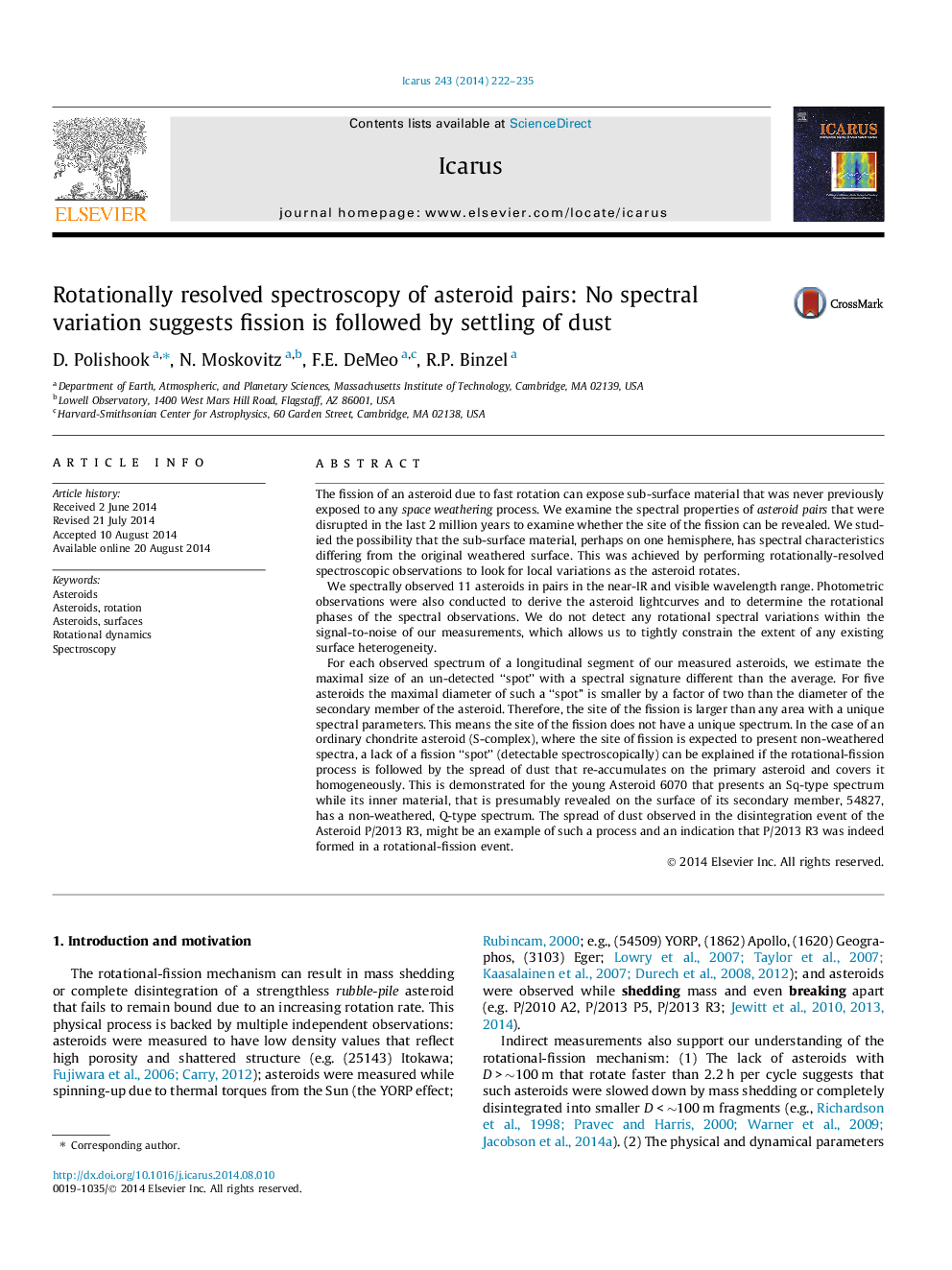| کد مقاله | کد نشریه | سال انتشار | مقاله انگلیسی | نسخه تمام متن |
|---|---|---|---|---|
| 1773095 | 1523547 | 2014 | 14 صفحه PDF | دانلود رایگان |
عنوان انگلیسی مقاله ISI
Rotationally resolved spectroscopy of asteroid pairs: No spectral variation suggests fission is followed by settling of dust
ترجمه فارسی عنوان
طیفسنجی حلقوی چرخشی از جفت سیارکها: هیچ تنوع طیفی نشان می دهد که تجزیه به دنبال انحلال گرد و غبار
دانلود مقاله + سفارش ترجمه
دانلود مقاله ISI انگلیسی
رایگان برای ایرانیان
کلمات کلیدی
سیارک ها، سیارک ها، چرخش، سیارک ها، سطوح، دینامیک چرخشی، طیف سنجی،
موضوعات مرتبط
مهندسی و علوم پایه
علوم زمین و سیارات
علوم فضا و نجوم
چکیده انگلیسی
For each observed spectrum of a longitudinal segment of our measured asteroids, we estimate the maximal size of an un-detected “spot” with a spectral signature different than the average. For five asteroids the maximal diameter of such a “spot” is smaller by a factor of two than the diameter of the secondary member of the asteroid. Therefore, the site of the fission is larger than any area with a unique spectral parameters. This means the site of the fission does not have a unique spectrum. In the case of an ordinary chondrite asteroid (S-complex), where the site of fission is expected to present non-weathered spectra, a lack of a fission “spot” (detectable spectroscopically) can be explained if the rotational-fission process is followed by the spread of dust that re-accumulates on the primary asteroid and covers it homogeneously. This is demonstrated for the young Asteroid 6070 that presents an Sq-type spectrum while its inner material, that is presumably revealed on the surface of its secondary member, 54827, has a non-weathered, Q-type spectrum. The spread of dust observed in the disintegration event of the Asteroid P/2013 R3, might be an example of such a process and an indication that P/2013 R3 was indeed formed in a rotational-fission event.
ناشر
Database: Elsevier - ScienceDirect (ساینس دایرکت)
Journal: Icarus - Volume 243, 15 November 2014, Pages 222-235
Journal: Icarus - Volume 243, 15 November 2014, Pages 222-235
نویسندگان
D. Polishook, N. Moskovitz, F.E. DeMeo, R.P. Binzel,
